 
Lodal
Kingsford, Michigan
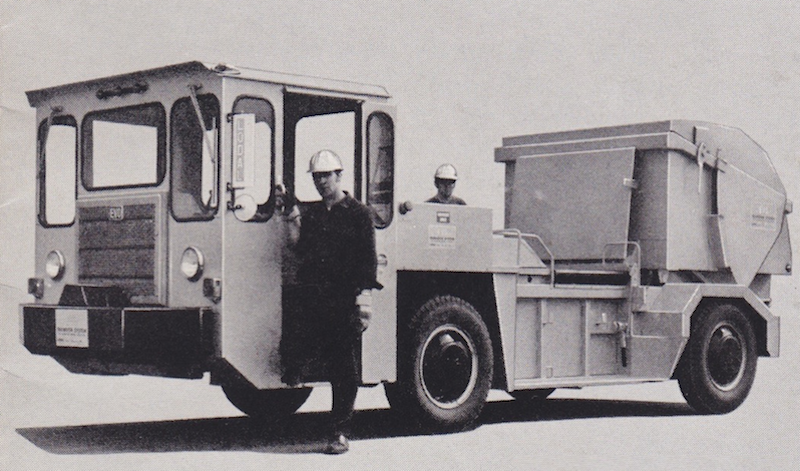
The front-drive, side-loading EVO collection-transfer vehicle by Lodal
EVO: THE LODAL TRANSFER SYSTEM
The Daytona Flyer train system had helped Lodal penetrate the refuse equipment market, and made the development of their own front loader body an imperative. However, the train system was labor-intensive, and was widely copied by other manufacturers, and anyone with welding skills. Likewise, the front loader field was becoming increasingly competitive, and the improved Load-a-Matic (LAM) would still have to go toe-to-toe with many capable rivals for the commercial container market. To distinguish themselves from the competition, Lodal in 1968 introduced an all-new alternative for their train system for satellite collection and transfer of waste. Instead of a multi-car train, an individual container would be coupled to a small self-propelled vehicle, with compaction means. Transfer was accomplished by detaching the container portion and emptying it to a "mother truck" as before. It was billed as the biggest advance in refuse collection in 30 years, an "evolution" known as the EVO Transfer System.
The EVO vehicle borrowed heavily from the Gar Wood T-100 unitized refuse truck, but was a much more logical use of that concept. Like the T-100, the EVO was a front-drive, forward conrtol truck with an automatic transmission, but it had a full cab and dual-steering controls instead of the "telephone booth" cab of the Gar Wood. Also like the T-100, it featured unitized construction, with no frame rails; the body and packer formed a structure which supported the chassis components with stresses evenly distributed throughout the entire structure. The EVO packer was a mid-ship side loader with a simple "sliding-drawer" partial packer, far less complex than the behemoth T-series rear and front loaders. This packer was comparable to those of the Shu-Pak and Bowles side loaders, but had a big advantage with its unit construction. Instead of riding above a standard (or lowered) truck chassis, the EVO hopper box actually forms the chassis itself. This resulted in exceptional crew access and loading depth, with a full cubic yard capacity plus low loading height. Full-width riding steps on either side were a mere 12 inches off the ground. Since EVO has no rear driveshaft and no live rear axle, most of the area between the wheelbase was usable for the packer and container.
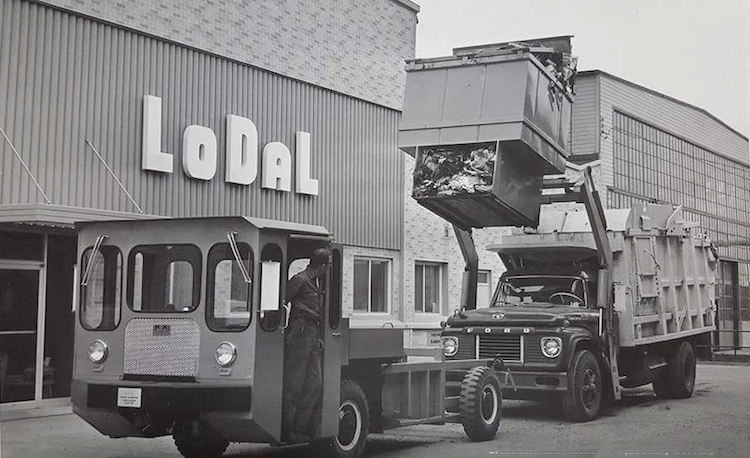
EVO vehicle with its filled body detached, and being lifted by the "mother truck"
Unlike any other refuse truck on the market, the EVO was not unloaded by tipping or ejection. The vehicle was driven to a transfer yard (any paved lot), where its filled body was detached and exchanged for an empty one. EVO then returned to collection duties with a minimum of travel time. Four or five containers could be filled on an average route, and emptied at any convenient time by a Lodal Load-a-Matic (LAM) front loader, which further compacted the load in its body. The EVO vehicle was designed for a one or two-man crew, and the mother truck for a single operator. As always, the LAM front loader could service commercial container routes at any time. The reduction in crew size and travel time to the dump site, as well as the versatility of the LAM unit were big selling points for cost-conscious municipalities.
The EVO was truly an amazing product from the small Michigan company, which had at that time been making dedicated refuse equipment for less than ten years. The progression from the original dump truck loaders, to the Load-a-Matic system, container trains and then the EVO had taken less than twenty years. The EVO had all the best engineering concepts of the Gar Wood T-100, while avoiding the excesses and complexity that had doomed the latter. The unitized EVO took full advantage of the capabilities of the low-rail type side loader, while the transfer system was advanced thinking in a time before automated loaders. In this sense, the Lodal EVO marks a turning point in the industry, which was followed by a wave of new ideas in refuse collection during the early 1970s.
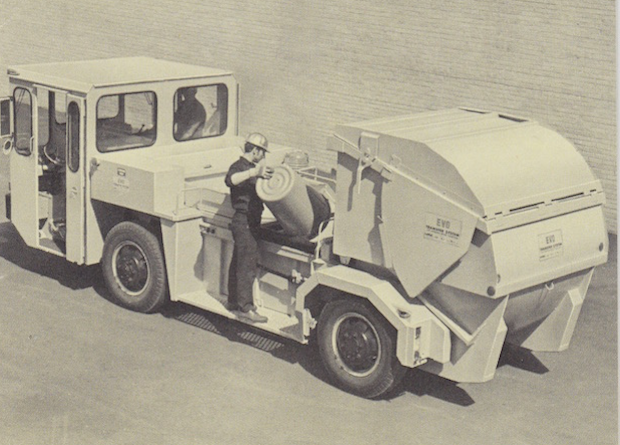
Refuse is loaded into the 1-yard hopper, which is integrated into the vehicle chassis for an ultra-low loading height
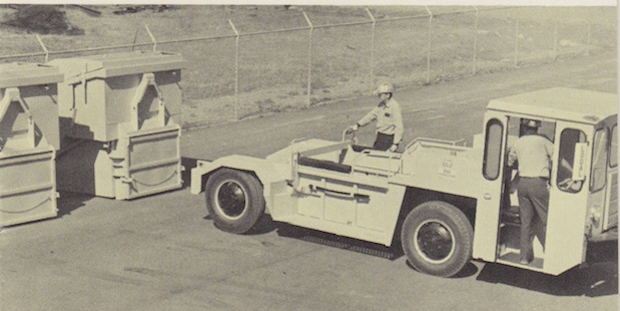
Filled, compacted container is detached and dropped off at central location
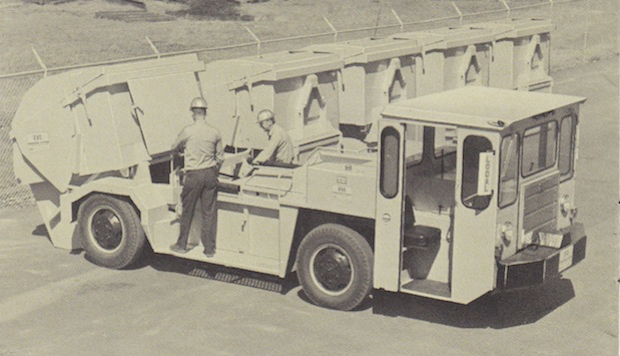
Empty container is attached, and EVO is ready to return to the collection route
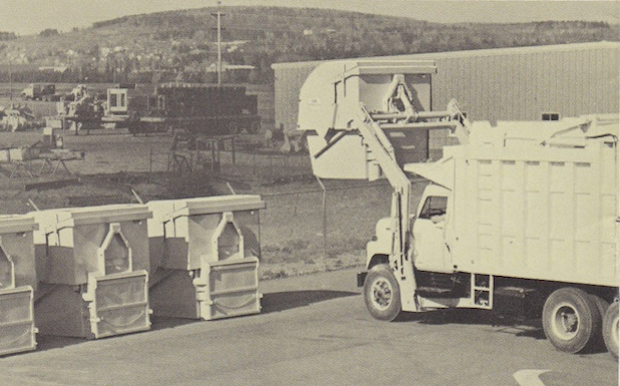
"Mother Truck" front loader empties container at any convenient time. Refuse is compacted again within the body,
and same truck and driver may service commercial container stops as well
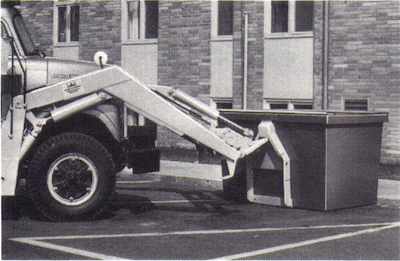 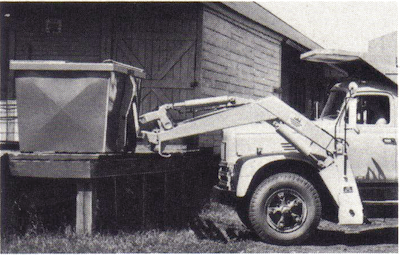
The Load-a-Matic (LAM) front loader received an all-new packer body for 1968, to handle the increased capacity of the EVO system.
The same LAM truck and driver could also service commercial containers placed at businesses, apartments, schools, etc.
The patented Lodal triangle coupler allowed for easy hook-ups, even at angles of up to 30 degrees, or from loading docks.
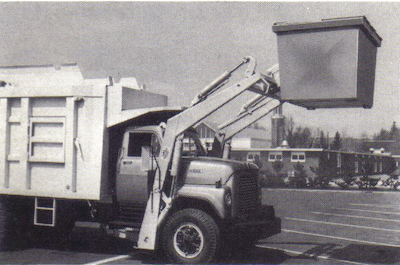 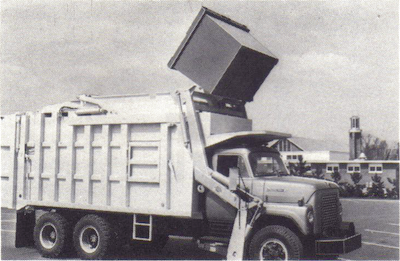
The Lodal arm, re-designed in 1963, had six hydraulic cylinders to control its movement
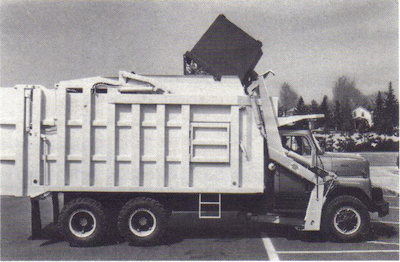 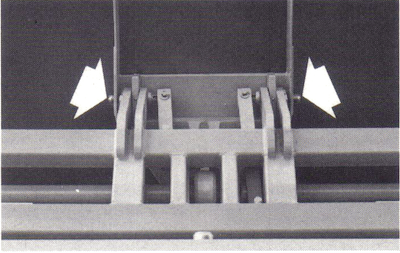
When inverted over the hopper, automatic lock lugs prevent the container from sliding off the triangle
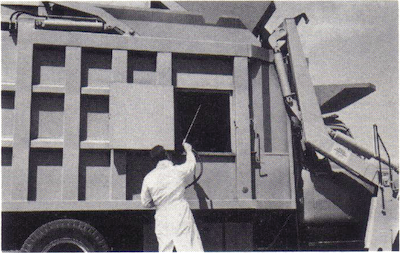 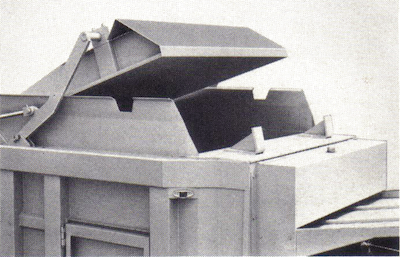
Optional 90-gallon container wash-out/disinfecting system and hydraulic hopper door
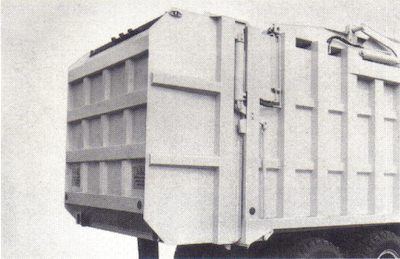 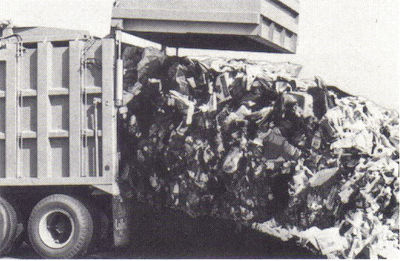
Bodies (now up to 32-yards) had bustle tailgate with hydraulic lift and automatic locks, roller platen packs and ejects load
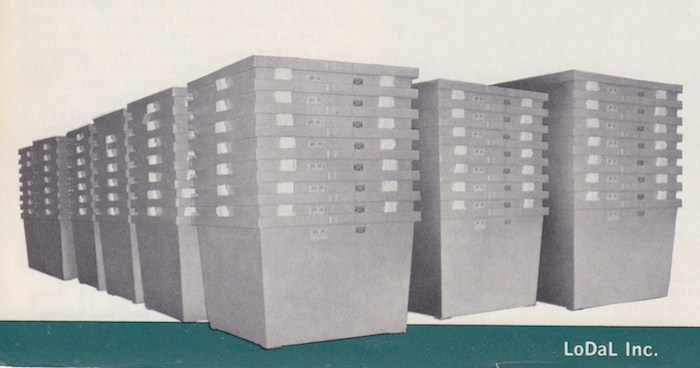
LAM containers with triangle coupler brackets are fully stackable with their lids removed
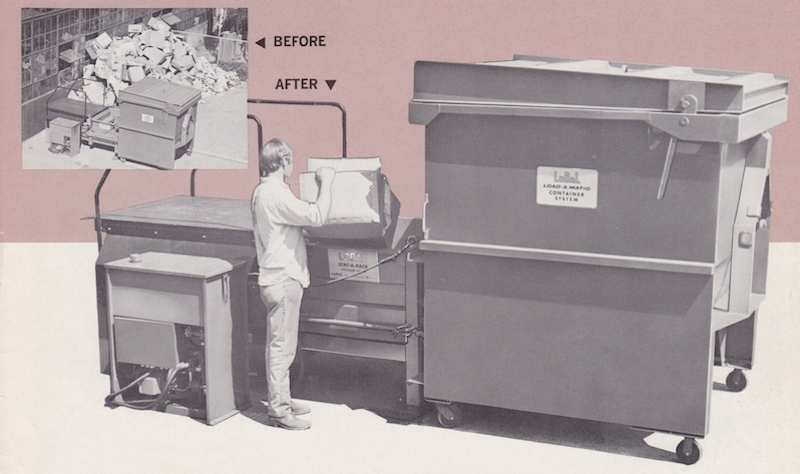
Lodal Stat-a-pack was a stationary version of the EVO packer
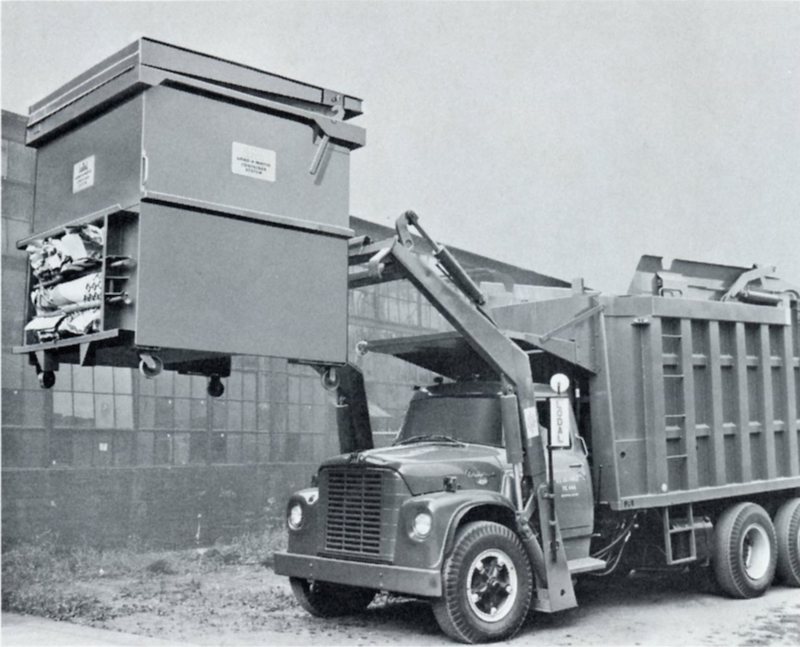
Lodal Stat-a-pack being emptied by a LAM mother truck
SELECTED PATENTS
|
Patent # |
Description |
Inventor |
Assignee |
Date |
|
US3451571A |
Refuse collection |
Brisson |
Lodal Inc. |
September 27, 1967 |



11/20/16
© 2016
All Rights Reserved
Photos from factory brochures/advertisements except as noted
Logos shown are the trademarks of respective manufacturers
|
|
| |